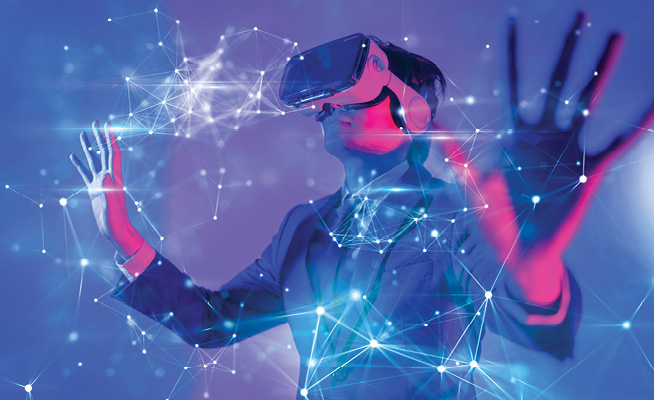
Metaverse: Virtual Reality is the Future of Corporate Training
The biggest technological advancement in this age that encourages people to use its representations as a substitute for reality is the internet. The metaverse is the most recent iteration of the Internet and is now the most talked-about subject.
Virtual reality, augmented reality, and physical presence can all coexist in the shared online area known as the metaverse. Users can engage in this simulation of the physical world using such tools called avatars, which are digital representations of their physical appearance. Teams can create diagrams in three dimensions or on a digital whiteboard, for instance, or an instructor can run sessions and take notes that are only visible to them.
Your trainees can live in a simulated environment called the metaverse where the laws of physics, gravity, and three – dimensionality are observed. From playing a straightforward game of catch with a basketball to more intricate simulations driven by digital twins of working machinery, this might be utilized for anything. Information and avatars can coexist in different metaverses, making everything accessible and adaptable. As a result, users can establish a large number of metaverses and share whatever they produce while still maintaining the accuracy of the objects and data they produce.
The L&D sector has embraced virtual and augmented reality in recent years to assist learning initiatives. The benefits of VR and AR can be combined in the metaverse and combined into a single real environment. The ability to control things, conduct role-playing games, access reference materials, have one-on-one conversations, and more is available to learners.
Why more than ever now?
All firms have been pushed to adopt digital technologies to assist remote team collaboration and training because of the pandemic’s requirement for working remotely. It’s no accident that as businesses adopt hybrid workspaces, interest in the Metaverse has increased over the past few years. Additionally, employees are growing weary of using video conferencing as their main mode of interaction and cooperation. Due to the pandemic, eLearning has also experienced a substantial rise in adoption. Immersive tools like the metaverse should intervene to give learners a more intense experience of “being there” while keeping a safe distance, which makes sense.
One study found that students who used virtual reality (VR):
- Learned four times faster than those who used traditional classroom instruction
- Had 275 percent more confidence in their abilities
- Were 3.75 times more emotionally engaged with the material
- Were four times more focused than their traditional eLearning peers.
VR is being widely incorporated into employee training programs by a number of Fortune 500 businesses, including UPS, ExxonMobil, and Walmart. And the results demonstrate the enormous success of employing virtual reality for training.






No Comments